A journal for storytelling, arguments, and discovery through tangential conversations.
Wednesday, July 24, 2024
|
Chigbo Arthur Anyaduba
If there’s ever such a thing as a national character, Nigeria’s must certainly and unarguably be the bombast. To describe it in Nigerian: the bombast is that figure of ostentatiousness, affected magniloquence, a la-di-da of pomposity, full of jaw-breaking verbism and mouth-tearing prolixism. This figure by its manner and act is the victorious hero in a drama of the excess. Be it in its language use, its gestures, its carriage, its aura, its gastronomic exertions, its gait, and so forth, it’s all about immoderation—that surplus of sound and act. Bombasticism is the protagonist of just about any facet of the Nigerian society—politics, economics, religion, popular culture, education—a reason I believe it’s become the quintessential Nigerian character: at least of the contemporary time.
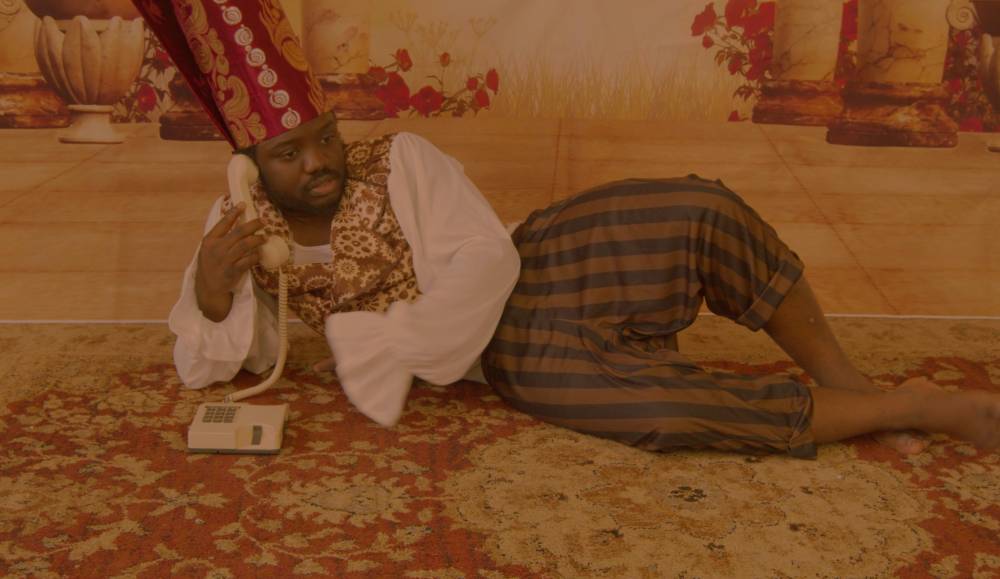
Tuesday, July 16, 2024
|
Su-Ying Lee
Amy Ching-Yan Lam and I look over the menus at a packed cha chaan teng (Hong Kong-style diner) in Markham, a suburb of Toronto. In the background are sounds of clattering dishware and Cantonese conversations. People are crowded into the small entryway as they eagerly await a table, glancing at diners who might be finishing up their meals. The energy in here is frenetic, but not unpleasant. Lam speaks Cantonese. I don’t. In this setting, the language conveys ease and maybe belonging, but is not required for ordering our midday meal. Descriptions of the dishes are written in Traditional Chinese (as it would be in Hong Kong) and in English (as it sometimes would be in the former British colony). Customers are guided by numbered pictures. The plastic-coated menu presents us with glossy photos of classics like pineapple bun sandwiches, baked meat and cheese casseroles served over rice, and instant noodles with a list of add-ins—the original fusion foods.
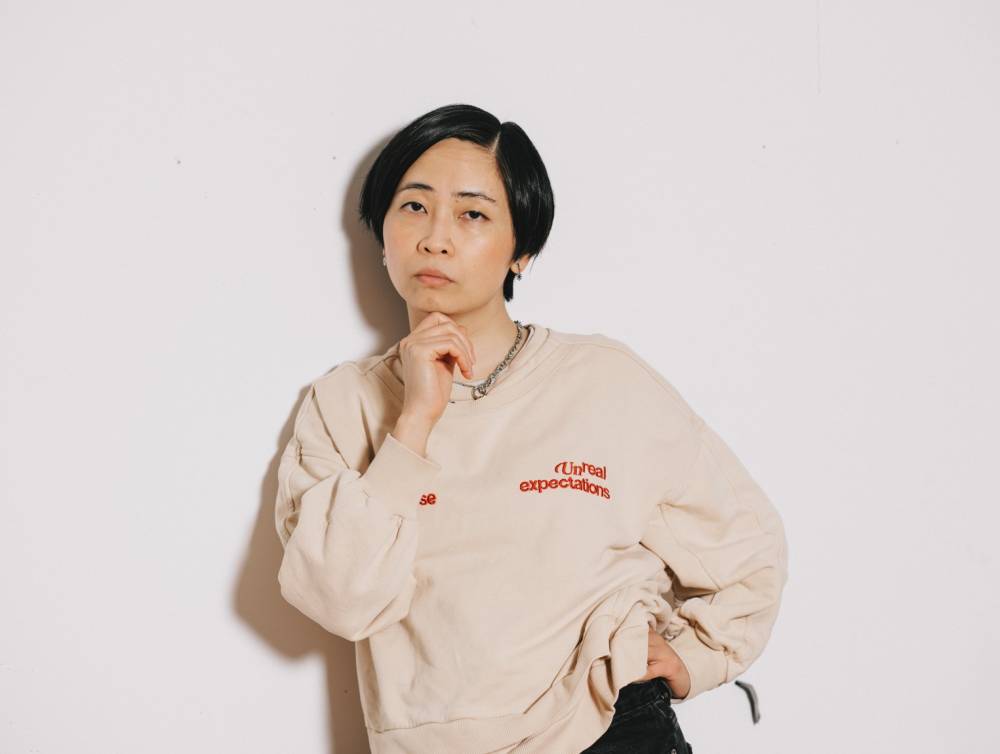
Thursday, July 11, 2024
|
Kaya Noteboom
Fungi are everywhere. I’m not the first to say it, but I want to be the last. In February, Triple Canopy published a series of essays surveying the ongoing proliferation of fungi-inspired culture. Mushrooms, with their pleasing color palettes and subtly salacious shapes, have been made into plushie toys, decorative patterns for dish towels and puzzles, and vibey graphic tees. Mushrooms, specifically the reproductive fruiting bodies of fungi that we can see protruding from soil or downed trees, are predictably easy to aestheticize. There are other parts such as mycelium that are aestheticized too but in different ways. These fine fungal threads are similar to roots forming networks underground that are largely out of sight. Unlike their squidgy counterparts, mycelial networks can’t be rendered into cutesy anthropomorphic characters. Instead, they’re more susceptible to conceptual aestheticization through language, social sciences, philosophy, and critical theory. Rather than make fungi appear more human as representations of mushrooms are prone to, mycelial aesthetics achieve the opposite.
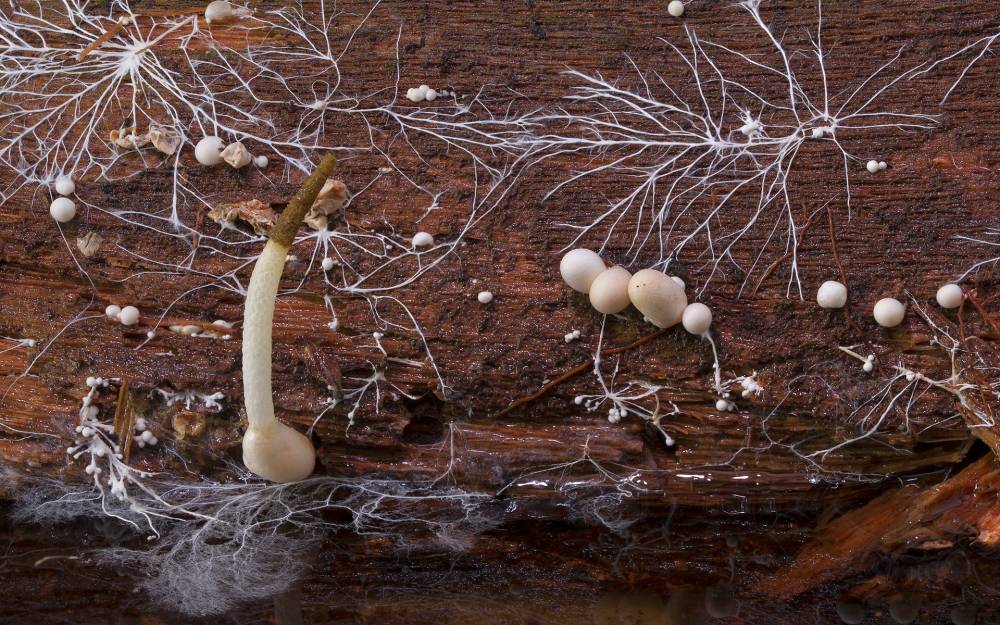
Monday, July 8, 2024
|
Lindsay Inglis
M.E. Sparks is an artist and educator based in Winnipeg, Manitoba, Treaty 1 Territory. Born in Kenora, Ontario, Sparks completed her MFA from Emily Carr University and her BFA from NSCAD University. She has received numerous awards and grants for her work from the Canada Council for the Arts and the BC Arts Council, among others, has been involved in several international residency programs, and has exhibited internationally.
Sparks’s practice is deeply rooted in the history of painting. As an art historian, I was eager to speak to her about her influences and how the past continues to inform the present. My interests as a historian are primarily rooted around the birth of modernism, just as Spark’s often takes inspiration from modernism. In preparation for this conversation, I read through exhibition texts, interviews, and watched old panels where Sparks spoke about her work. Throughout this research, one thing in particular stood out to me: she was very well-spoken and could clearly articulate the thought process behind her work as well as her perspectives on the world around her. With this in mind and our overlapping interests, I was both nervous and excited to speak with her.
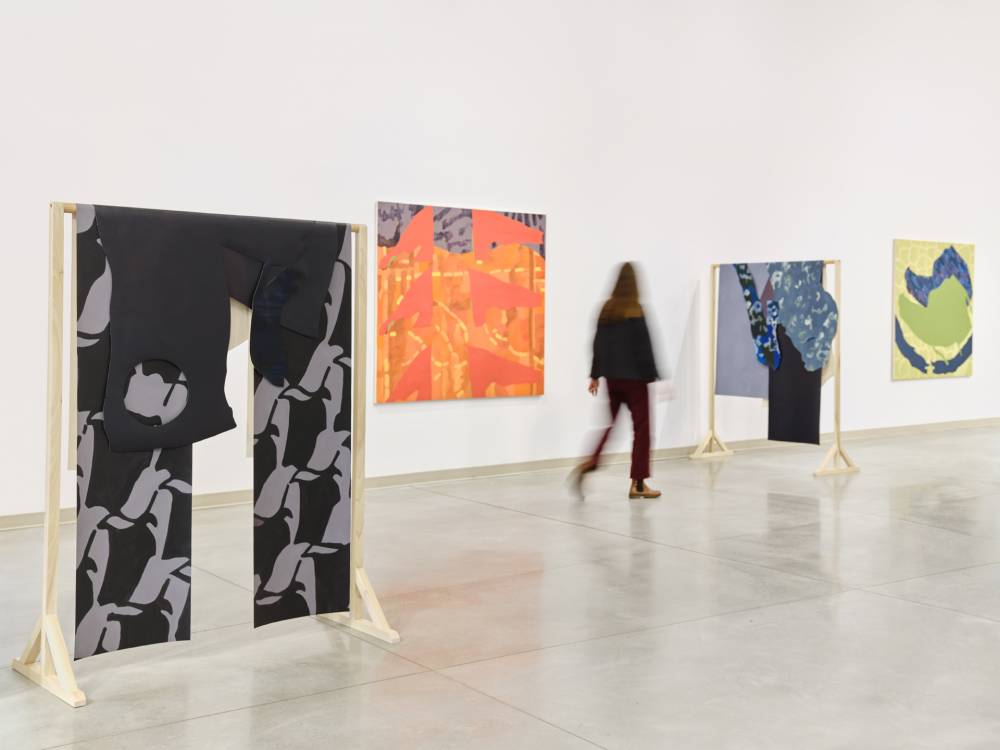
Tuesday, June 25, 2024
|
Iacopo Prinetti
In a recent article for Airmail Magazine, a U.S.-based online lifestyle publication, the artist Laila Gohar presented her formula for hosting the perfect party. It included, in random order: Laillier Blanc des Blancs champagne (“holiday water”), crystal cups (“so wide that almost seem like swimming pools”), cotton-linen tablecloths (“elegant yet not too uptight!”), and mother-of-pearl spoons (“perfect for caviar, but also for ice cream or sorbet”). In Gohar’s opinion, these chiselled details aim to create an atmosphere “relaxed yet considered, easygoing but layered.” I would be lying if I said that I’m not mesmerized by the atmosphere Gohar depicts, flawlessly combining the irony of Madonna’s “Material Girl” with the decadence of the infamously chic NYC restaurant La Cote Basque, which was immortalized by Truman Capote in his unfinished book Answered Prayers. In the current times of growing violence, uncertainties, and genocide, this champagne-filled, oyster-flooded ambience is where I would like to drown.

Thursday, June 20, 2024
|
Amy Fung
In response to the Spring Equinox, Public Parking Editorial Resident Amy Fung invited multidisciplinary cultural workers Indu Vashist and Cecilia Berkovic to engage in a mindful and honest conversation on themes of cycles, practice, violence, and endurance to mark this year’s Summer Solstice. Meeting and working in the Toronto arts scene in the 2010s, Berkovic, Fung, and Vashist reflect on the present era of what it means to be alive.

Thursday, June 13, 2024
|
Olajide Salawu
In a new documentary film on his life and politics, Robert Kyagulanyi Ssentamu is in a Toyota SUV when the camera pans closely to his face revealing his lanky form even in his cardigan. His red beret — the veritable and allegorical element of his political struggle — hangs on his knee in the brief foreshadow. Along with other comrades of his political persuasion, they are gearing up for a campaign against one of Africa’s last dictators. Shortly after this scene, Ssentamu asks if his comrades are ready for the outing in solidarity, and a hymn follows. They all chorus their ache of their country’s political hostage and tempest but register their assurance of victory in the end. It is an overture that summarizes the intention of the film: to familiarize the audience with the massive energy Ssentamu has gained from his people. We see him lead an entourage of motorcyclists through a market alley and standing high with his red beret as an unflagging radical raising his fist in struggle. However, we would soon learn that opposition comes at a price; people are seen seeking safety in every corner as sporadic shootings heighten the tempo and pathos of the film. Ssentamu, known as Bobi Wine, his stage moniker as a musician, has become an African symbol of liberationism. And beyond his music, has been in the fierce field of Ugandan politics. In the last decade, Wine’s personhood has edged out as a critic, ideologue, and a credible antagonist of Yoweri Museveni.

Monday, June 10, 2024
|
Gabrielle Willms
Theo Jean Cuthand’s videos are full of good lines, but there’s no time to dwell on them. They’re delivered without pause, almost matter of factly, in unhurried monologues that span the video’s run time. In 'Extractions' (2019), he describes the terrifying lumber scrap incinerator in Merritt, where he spent four intolerable months as a teen, “like something in a Disney movie symbolizing death and anguish.” Earlier, over footage of a series of explosions in an open pit mine, he notes benignly, “I like to think there are alternatives.” In Less Lethal Fetishes (2019), he uses gas masks to meditate on kink culture and the art world’s toxic relationship with industry. As the video concludes, Cuthand laments the loss of a “simpler time” when he could just appreciate the “horny joy of watching a woman wearing a gas mask while in bondage” and not consider its political implications.
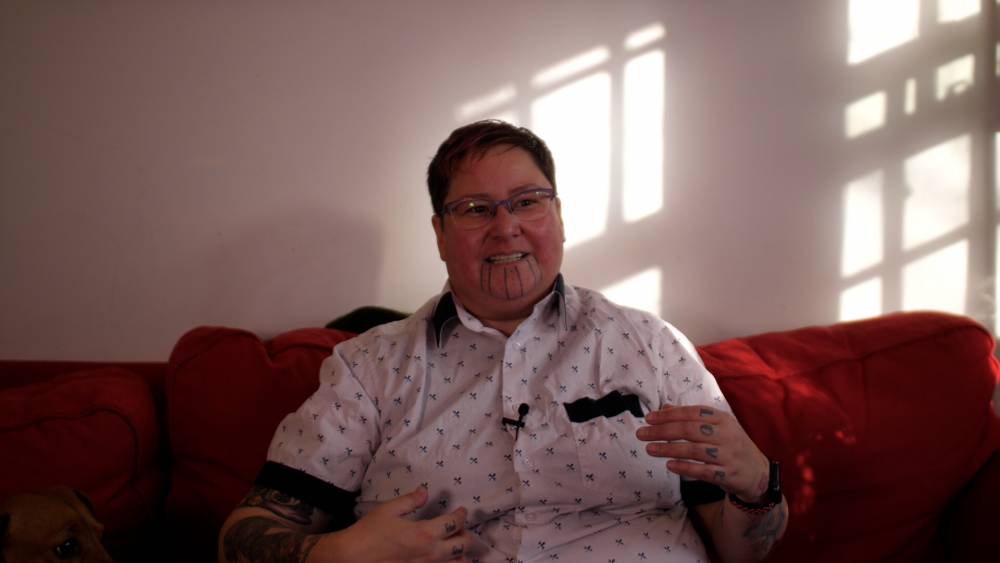
Wednesday, June 5, 2024
|
JiaJia Fei
The intersection of art and fitness is so small that I can only name a handful of artists who deliberately engage with the subject (all of them male, of course). It is a topic that is so rarely discussed in my world–the art world–that it took a global health crisis for me to finally begin to take control of my own health, and to introduce an entirely new vocabulary into my vernacular. Four years later, I now find myself speaking fluently–and passionately–about hypertrophy, isometric movements, and macronutrients. Before I became the person I am today–the person who works out everyday and whose identity is now defined by the fact that she can do 10 pull-ups and deadlift twice her body weight–I never exercised. Though I had been a dedicated cyclist in New York City for the last 15 years, not once did I ever step inside of a gym, nor did I ever pick up a weight. The idea of excelling in sports or fitness was just not a part of my personal brand; I was the creative one, the subversive one, the eccentric, artsy one. Going to the gym was just so mainstream. Plus, I (convinced myself I) didn’t have time.
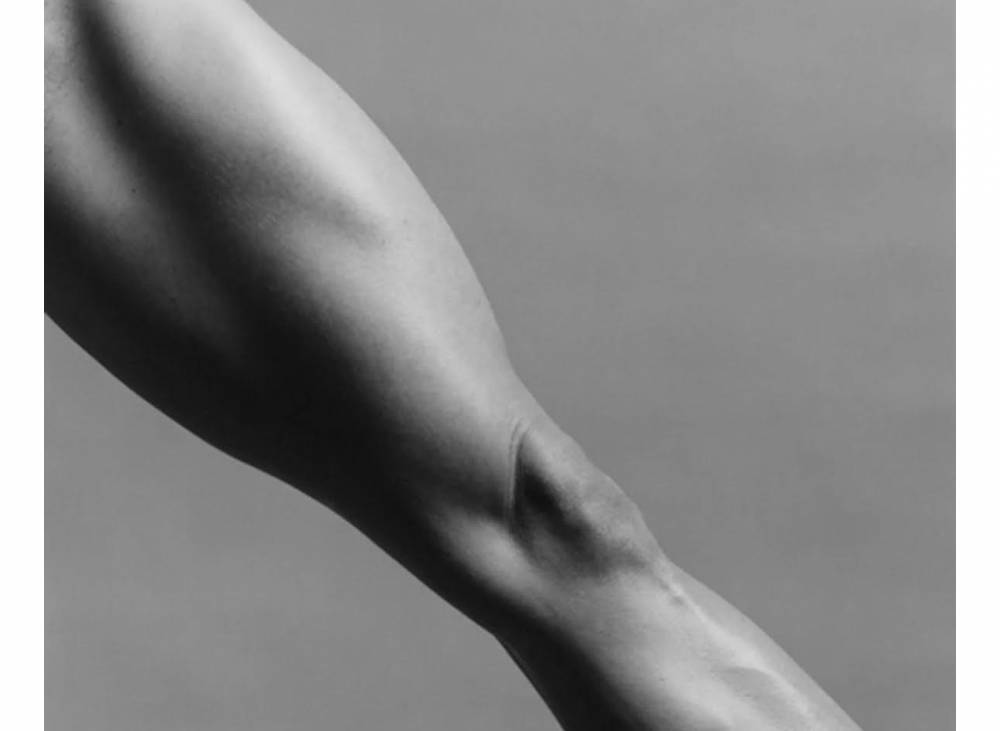
Tuesday, May 28, 2024
|
greta hamilton
The presence of soil in contemporary art can be thought of as continuous with the Earth Art movement of the 1960s and 1970s. Iconic works of this era include Andy Goldsworthy’s stone cairns and cracked clay walls; Michael Heizer’s geologic fissure in the Nevada desert; Walter De Maria’s Earth Room sculptures, in which the artist scattered soil across gallery floors; and Robert Smithson’s mud and basalt jetty in Utah’s Great Salt Lake. What differentiates contemporary uses of soil from these material predecessors, however, is the more recent association of soil with climate change, colonization, and resource scarcity, emphasized by environmental catastrophe.
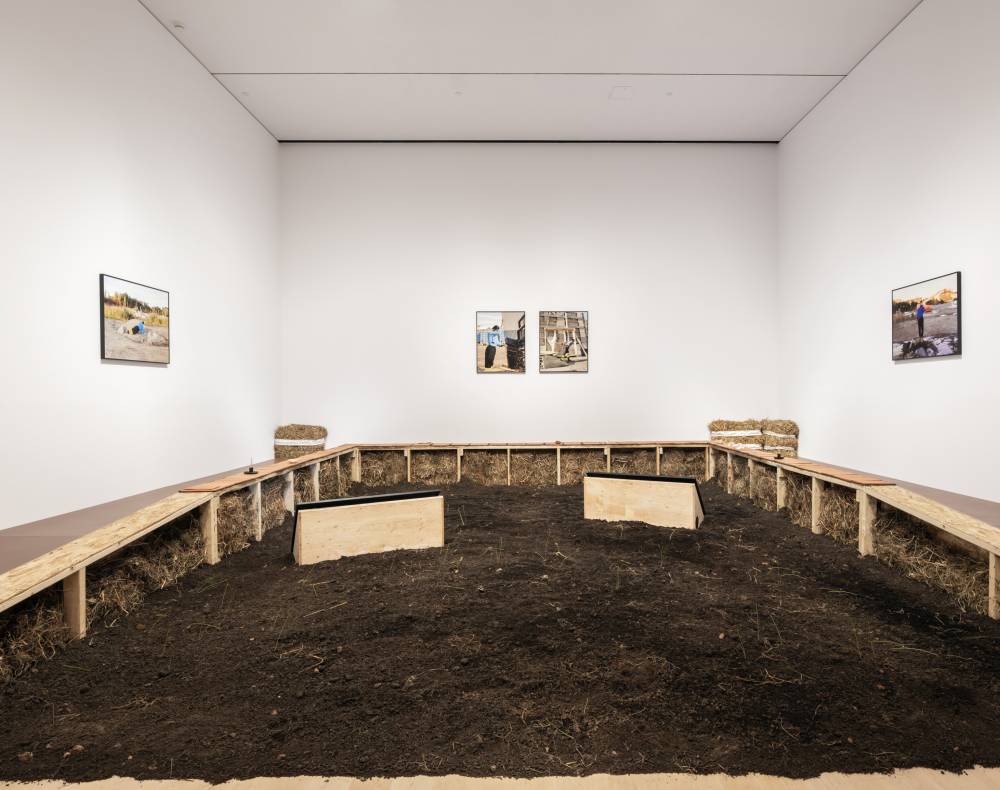
Thursday, May 16, 2024
|
Lauren Fournier
Tazeen Qayyum is a Pakistani-Canadian artist based in Toronto. She was trained in the South Asian and Persian traditions of miniaturist painting before she began the mixed-media practice which she sustains today. During the month of Ramadan, I wanted to speak with her about what it is like to be a practicing Muslim as well as a contemporary artist working in Canada. I was also interested in her experience making work that is conceptually driven and shaped by culture and faith. For example, in her iconic archival ink on paper works, Qayyum repeats a word written in Urdu script to form concentric circles, which the artist inscribes through a repetitive movement that is prayer-like. The artist chooses words stemming from concepts found in her Muslim faith. Words like khayaal (care), sakoon (calm/peace), sabr (patience), zameer (conscience), yaqeen (certainty/belief), and fikr (concern/thought) have featured in her work, as well as more explicitly political words like brabri/bartri (equality/privilege), which the artist made in direct response to the 2020 resurgence of Black Lives Matter.
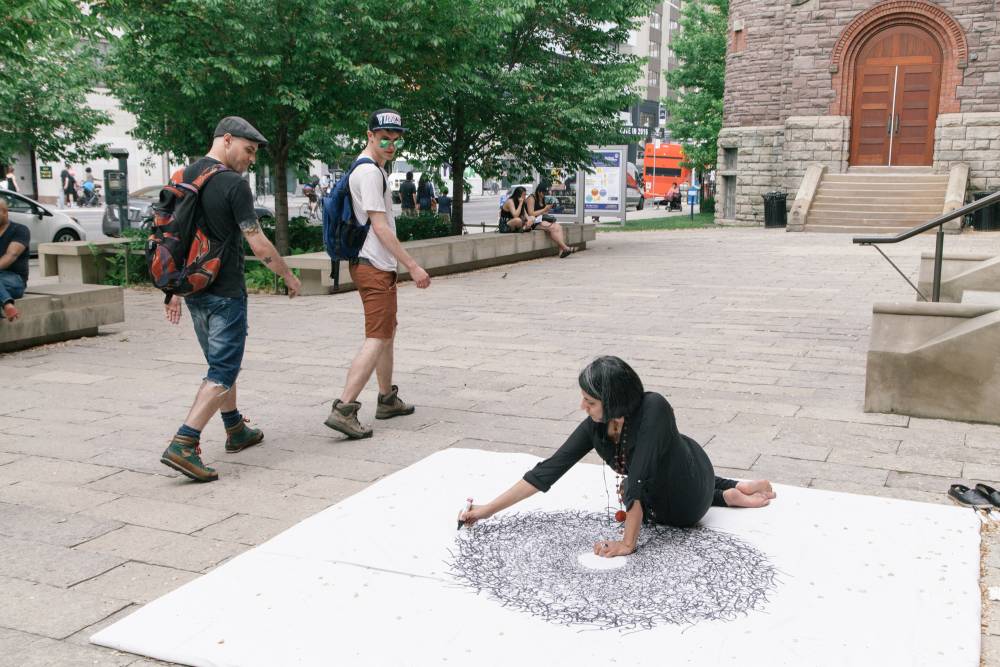
Monday, May 13, 2024
|
Tammer El-Sheikh
I was pleased to hear that the incision would run from one side of my neck to the other, following a natural wrinkle. The original plan was to begin a descending cut under one ear for several inches, then proceed across the neck and back up to the other ear – a “horseshoe incision” that wouldn’t age as well. In any case, I was facing a bilateral neck dissection to remove a large malignant tumor on my thyroid and an unknown but significant number of affected lymph nodes in the area. To my relief, this was a curative operation with a high rate of success and a prognosis for a statistically “normal life,” which, during the first several months post-op, felt anything but normal. My old voice was gone, and I didn’t know what to make of the new one. Although vocal paralysis is a risk in a total thyroidectomy, I had avoided this fate thanks to sophisticated nerve-monitoring gadgetry, but I emerged from the operation with a kind of breathy cookie-monster voice that, two years on, has settled somewhere in the vicinity of a fashionable vocal fry.
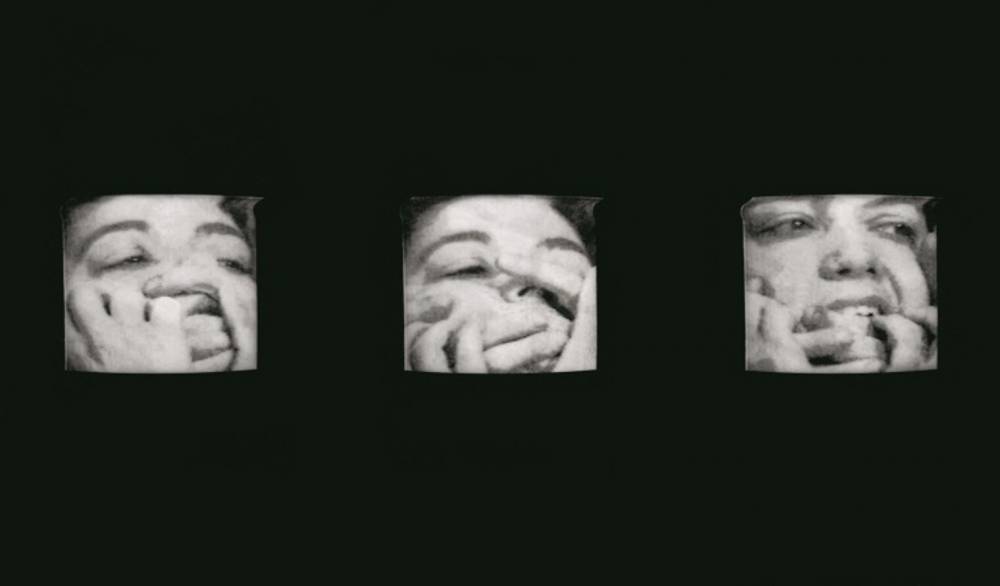
Monday, May 6, 2024
|
Michael Martini
What if grants worked like insurance policies? Artists would buy into them and on the off-chance an opportunity actually struck them the granting body would be obligated to pay out and make the opportunity happen. Insurance, of course, is based on low odds. A payout is a form of surrender: “Fine, you win. Here’s your money.”
The Canada Council for the Arts funded approximately 15% of Creation projects last fall . A heads up about their skeletal wallet would certainly have been helpful to the other 85% of applicants. There’s some commiseration to be done here. The applicants certainly spent hours upon hours over lukewarm coffees amping up their ideas, their CVs, and converting them into PDFs to boot. here is a type of nudity that goes into grant-writing, not just administrative nudity (“here’s how poor I am, colour-coded for your convenience”) but also emotional (“here what I care about, deeply; here’s who I am, deeply; may I please have a cookie now?”). Click here to confirm we can share this with the government however we like. This time around 85% of applicants sent their nudes and got blocked.
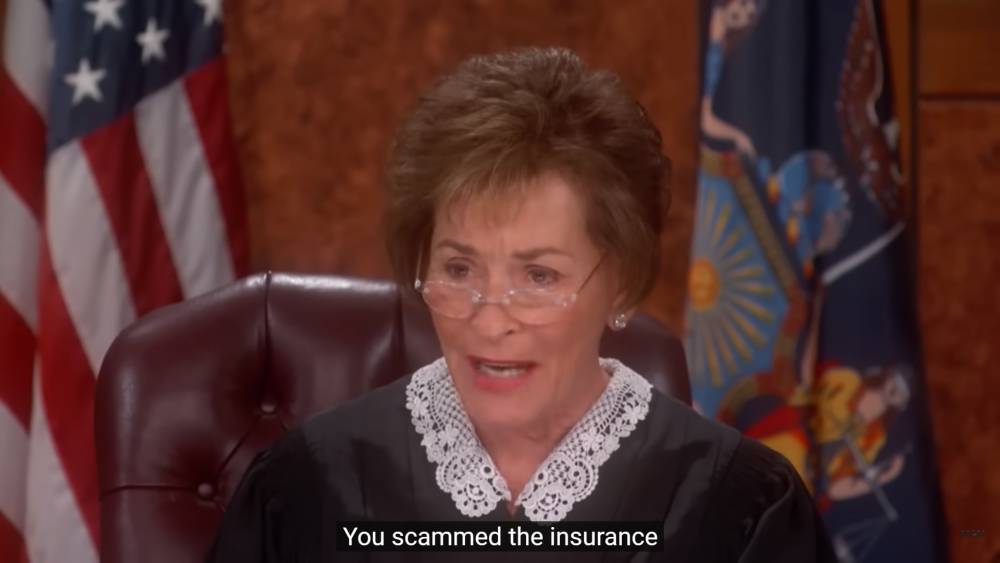
Wednesday, May 1, 2024
|
Ashley Culver
On the second Monday in December, I click the link, open a window, and see myself. Instinctively, I adjust my posture. Anne Low has joined your meeting room. A couple of months earlier, I visited Low’s solo exhibition Bury Me at Franz Kaka on Dupont Street in Toronto. The show featured five works that engage with the domestic and the decorative. Inspired by pre-industrialized cloth samples, Low’s woven textiles are presented in sculptural forms; each work gestures towards the material evidence of housework: cleaning, mending, storing, tending, and washing. An artist-weaver, Low works in sculpture, installation, textiles, and printmaking. After completing her fine art education at the Emily Carr Institute of Art and Design and later, at the Royal College of Art, Low studied at the Marshfield School of Weaving in Vermont in the summer of 2012, a place to which she has often returned.
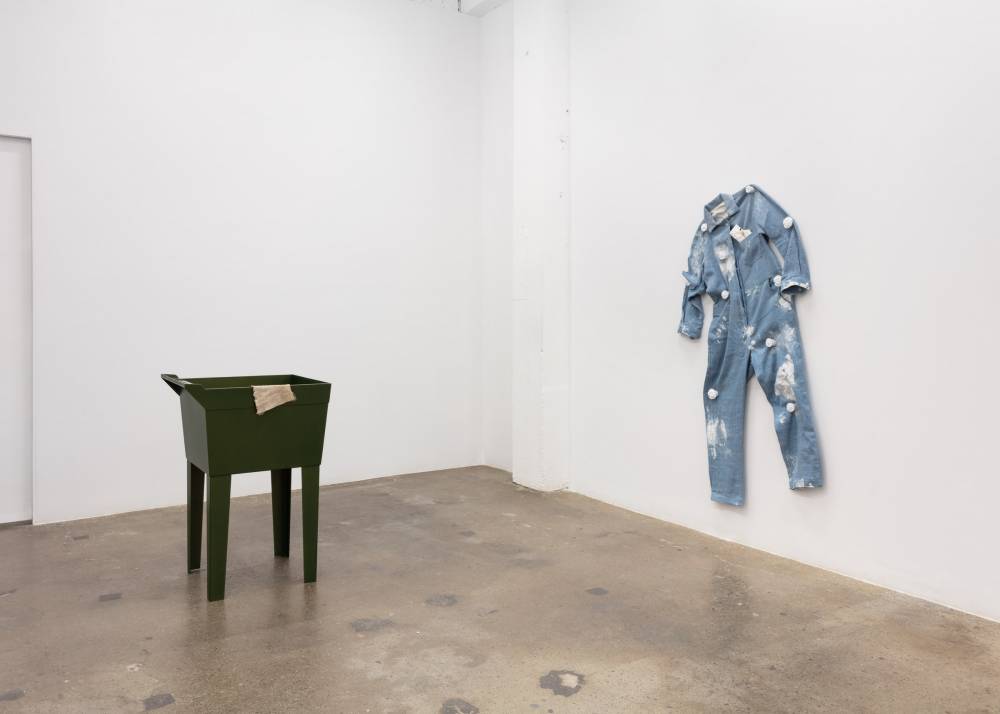
Tuesday, April 23, 2024
|
Shi-An Costello
My work as an artist allows me to make some sense out of my life's material chaos. The process of making art does this for me because, to me, art is the capturing, reordering, and if ultimately successful, the framing of the chaos of life into something worth saving. My artistic creations allow me the opportunity to reframe my additive universe of experiences.
People are endlessly generative, creating more and more material through the entirety of their lives. Be it words, notes, gestures, sounds, or brush strokes. A unique quality of art is that we can create a thing that lasts long past our own brief lives. To find and record the final thing, whatever that thing might be, is to make a frame, literal or figurative, around a small portion of the untamable force of human creation.

Monday, April 8, 2024
|
isra rene
I have thought a lot about whispers. I once asked a friend if they noticed whispers in their life and they looked at me with sheer terror. It dawned on me then that I needed to map this territory, or at least humbly attempt to follow it’s inchoate thread. My thoughts wander around the (non)purpose of a whisper. I think about its scale. I think about the disintegrated absences left by a whisper. I think about its atonal architecture in active decay and how, as it passes from one source to the next, there is always a surprise. From addition to omission, whispers will never fail to surprise you. I remember as a child I loved to play the Telephone Game. It is an intimate game of transmission chaining, or otherwise known as whispering. In the game a message is whispered from one person to the next, it ripples until it reaches the final player. That person has the ephaptic duty of telling the group what transmission they received.I remember as a child I loved to play the Telephone Game. It is an intimate game of transmission chaining, or otherwise known as whispering. In the game a message is whispered from one person to the next, it ripples until it reaches the final player. That person has the ephaptic duty of telling the group what transmission they received. Through the sequence of person-to-person accumulation the final arrangement is almost always partially vacant of the original constitution. This game is a performance of intimacy, listening closely, and deciphering. It is the act of noticing at the most discreet level, knowing that distortion is inevitable, but unearthing new meaning in it and welcoming it all the same. I find myself positively obsessed with the formation and de-location of a whisper.

Wednesday, April 3, 2024
|
Emily Zuberec
Summer 2023 was eventful for the stretch of avenue du Parc between avenue Fairmount and rue St. Viateur in Montreal's Mile End neighbourhood. Each Thursday between June 1st and July 8th, photographers Fatine-Violette Sabiri and Paras Vijan welcomed visitors into the world of One by Two, their serialised exhibition at Galerie Eli Kerr. These vernissages came to punctuate the lives of many of us in the neighbourhood's creative community; our attention was oriented towards the gallery space and the sidewalk benches that flank the entryway, as we convened in a way that was profound, joyful, and sorely missed once the exhibition closed. That was the experience for the audience — backstage, Sabiri and Vijan worked away diligently and playfully at creating a photography show that, in its durational and evolving nature, put forward a definition of collaboration. Simultaneously, the exhibition rendered visible the parallel mechanisms of friendship and photography, both of which, like collaboration, hinge on time-elapsed.

Monday, March 25, 2024
|
eunice bélidor
I am sitting on the windowsill of my studio in the Résidence des Récollets, in Paris. It is 22h12, Paris time, and I am wondering if I should spend the rainy day tomorrow working on various curatorial projects waiting for me back home in Montreal, or if I should wake up early and go to my hot yoga class. Ever since I knew I was coming to Paris, I searched the web to see if they had the type of hot yoga I have been doing for the last 15 years. The studio in Montreal no longer exists, and my body and mind have been aching ever since.
I started my yoga practice at 17 years old: my yoga teacher would come once a week to my high school to teach us beginner’s Hatha Yoga. Back then, I was a weird kid – meaning it was odd to other Black students that I would do yoga, not eat meat, devour Madonna biographies, and read about Buddhism. But what yoga gave me was a gateway to mindfulness and creativity, an outlet to think beyond the education and the system I was brought up in. Yoga opened my eyes to new perspectives and allowed me to think of myself as something or someone else.

Wednesday, March 20, 2024
|
Amy Fung
I had been thinking of cycles before consciously becoming aware of completing one. I turned 42 last Fall, which can be divided as six cycles of seven, or two cycles of 21, or 14 cycles of three, or any number of reversals. Throughout my 20s, I was borderline obsessed with my Saturn Return, which is when you complete four cycles of seven, a spiritually significant number through most of human history. Seven is a number that appears and reappears from the Sumerians’ seven-branches in the Tree of Life and the institutionalization of the seen day week to the seven heavens of the Qu’ran, and the Talmud to Hinduism to the seven virtues of Buddhism and the Catholic’s seven sacraments and seven sins, and so on. Music falls across seven major note scales (do rei me). The spectrum of refracted light is expressed in seven colours (roy g biv). From tip to tail, there are seven chakras from crown to root.

Thursday, March 14, 2024
|
Micaela Dixon
A code of conduct is a list. It can be short or long, normally between five to seven points. It enumerates a certain set of behaviours that are appropriate in a given setting. Sometimes behaviours that are not appropriate are listed too. It is sort of the x and y of socialisation. It plots a space between appropriate and inappropriate behaviour. But it is entirely movable and depends on a given situation, so some would say that it’s site specific. The first time I meet artist, Ethan Murphy is on a Zoom call sometime in late 2021, but technically the second time we meet in person is on Fogo Island in Newfoundland & Labrador. I wait for him in an unmarked parking lot in Joe Batt’s Arm and he arrives fresh off the ferry in a 2004 red Toyota Tacoma, blasting music and a large smile.

Wednesday, March 6, 2024
|
Jasper Wrinch
I’ve been listening for the sound of a drill driven under. It’s coming any day now. The rumble and the crack of an old vein being revitalized. Recovering ounces that were overlooked by the old timers. A mechanical curtain to the wind sweeping through the willow, so that the rust can once again be followed into the rock. Uncovering an old route into the mountain side, widening the adit, digging that hole deeper. Back into the wrecked earth, seeping. All this in a town sitting in a bowl at the end of the highway. At the head of a lake whose tarnished shore had its contours changed in a boom and whose sediment settled into an uneasy equilibrium in the bust. This generational bust it has been wallowing in. Populations un-ballooning, buildings slumping under the snow load, paint peeling and scraped away. To be refreshed by colour and sound added back into a landscape wrung. Footings finally squeezed under the foundationless mine homes, constructed quick and left to warp in the shifting ground, to hold them up for longer than the boom ever was. They say this is a way out, but I could have sworn I saw the theatre full on a Wednesday night, all within the bust. Not significant.

Tuesday, February 27, 2024
|
Hannah Doucet
When rewatching old artist talks of AO Roberts in preparation for our conversations I came across a quote of theirs “I have so much to say but I don’t want to tell you anything at all.” There's a tension within Roberts’ work between revealing and obscuring, a generosity to the viewer as well as a distrust. AO Roberts is a Winnipeg-based multidisciplinary artist working in sculptural installation and sound. They have also performed in numerous noise projects and punk bands such as Wolbachia, Kursk, Hoover Death, and VOR. During the winter of 2022, I chatted with Roberts several times on Zoom, myself in Toronto, and Roberts in Winnipeg. Throughout these conversations, we touched on many of the diverging threads in Roberts’ work: medieval histories, anti-capitalist frameworks, chronic illness, and the tactile and sonic qualities of language.

Thursday, February 15, 2024
|
Kalina Nedelcheva
Lens-based artist and filmmaker Zinnia Naqvi and I met by chance during the 2023 Mayworks Festival where she presented 'The Professor’s Desk' (2023), a project that told the stories of four cases of discrimination in Canadian universities. At the time, I was a Teaching Assistant at OCAD University and the outgoing Executive Director of Graduate Studies for the OCAD Student Union; the name of Naqvi’s exhibition piqued my interest due to my political involvement with the institution and my desire to research and work toward better futures for students and faculty. Part of my job was to navigate and mediate conflict, to anticipate and strategize campaigns, and to work toward building a more equitable academic and workplace environment. To do my job effectively meant that I needed to nurture 360-degree awareness—to analyze present conditions, to acknowledge the past, to plan for the future. Naqvi’s 'The Professor’s Desk' looked at the past but projected into the future.

Friday, February 2, 2024
|
Lee Suksi
Many of the first naked bodies I saw were adult, varied in fitness and age. Luck and interest brought me to a public high school where we drew from life. Life drawing is a record of concentration that flattens judgement and connects eye to hand, hand to subject. At the same time, live models - as opposed to bowls of apples - make their vulnerability known with their tremors, heartbeats and blinking. For myself and my teenage classmates, these bodies awakened our sensitivities without activating our anxieties. Drawing was an uninstructed period of observation, a peaceful break in the alarm bells and chaos of adolescence. Our drawings rendered the weight of a person’s side, the looseness where an ear had been stretched and the earring abandoned and the tremble in athletes’ headstands. An older man’s missing toe gave poignancy to his standing poses. Two best friends modelling together inspired confidence. A beautiful, naked ex-classmate was reduced to the weight and light we only had the afternoon to record. We learned instinctively to press harder with our pens not where we saw shadow but in those places where we saw vitality: fingertips, eyes and genitals. We learned the potential of making marks alongside the potential of what unadorned bodies can do and how they can go.

Friday, January 19, 2024
|
Irene Bindi
As 2023 saw the surfacing of a political art seemingly unrecognizable to the art establishment, I’m fascinated by this prioritization of the views of children instead of culturally anointed experts. From posters to music to writing to videos and performance, art led by youth and informed by revolutionary traditions has flooded our phones and public spaces. In a moment when the stakes couldn’t possibly be higher, repeated failures to mention this art of rebellion shamefully fastens the art world to the bankruptcy of a culture whose institutional framework dully refuses to acknowledge Palestinian resistance and existence.In addition to innumerable firings, exclusions, and punishments for being Palestinian or showing solidarity with Palestinians over the past months, we saw a slew of art and cultural institutional disgraces on the subject, from Documenta, to Artforum, to the International Documentary Festival Amsterdam, to the Frankfurt Book Fair—exposing a damning slate of deliberate evictions and revocations rooted in outright bigotry, fear, and ultimately, an allegiance to Western foreign policy. To those who would shrug at cultural institutions’ adherence to such policy on the grounds that it’s always been that way—we should ask why an open display of that historical consistency, that long project of normalization, should be felt as less horrific instead of more. It was astounding to read year-end reviews that absented, or bemoaned a lack of, vibrant political art, while failing to mention the final, world-altering months of 2023. But it is precisely because the art world holds art institutions, rather than art, up as social and societal reflectors, that it so often becomes the most flagrant of cultural disappointments. The refusal to acknowledge genocide is justified here through the claim that it is beyond the scope of a given cultural context.

Thursday, January 11, 2024
|
Public Parking
Public Parking is delighted to announce the writers involved in our editorial residency for 2024. For this program, we aim to work with thinkers who are adjacent to or outside the realm of the arts as part of Public Parking’s ongoing efforts to broaden the scope of ideas we feature and the communities we reach. This project invites guest editors to be residents at Public Parking over an extended 12-month period. Throughout this time they will work with our team to publish a series of either self-written or programmed texts. We are glad to welcome editorial residents eunice bélidor, Tammer El-Sheikh, and Amy Fung.

Wednesday, January 10, 2024
|
Mary King
There is an old Greek legend that tells us about Croseus, the King of Lydia, and his visit to the Delphic Oracle. He sent gifts to the oracle in advance of his visit, and when he visited her, asked if he should wage war against the Persians. The oracle of Delphi told him that if he went to war, a great empire would fall. Encouraged by her words, he invaded. It was his own empire that was destroyed in the process. Some years end with a semicolon, some with a mysterious ellipses … 2020 was like this, when we sat alone in our homes, in our COVID bubbles. What comes next? We asked each other/the internet. Other years can only be punctuated by a brute period. 2023 was this kind of year, drawing to a close amidst the crushing reality of war crimes committed by, with, and through imperial powers, at their deadliest in Sudan, Congo, Yemen, and Palestine.

Friday, December 29, 2023
|
Madeline Bogoch
In 2023, there was nostalgia for bucket hats and for a time of manageable technological (non) crisis. AI has emerged at the forefront of public consciousness following the spitfire rollout of generative models like ChatGPT and Stable Diffusion, forcing the world to take it seriously. A concomitant chorus of AI anxiety has also arisen. The art world is no stranger to precarity, however, only recently have creative workers become the champions of this particular cautionary refrain, recognizing the threat to our livelihoods this technology presents. Alongside these concerns, the ability of these programs to generate convincing falsehoods contributes to a volatile climate of misinformation and distrust that has been spreading like wildfire since the pandemic.

Thursday, December 7, 2023
|
Mary Fellios
A descent into darkness both literally and allegorically accompanied Atlanta-based artist Paul Stephen Benjamin’s recent solo exhibition, Black Summer, at Efraín López gallery in New York City. The nascent gallery’s small and windowless subterranean space appropriately housed the products of Benjamin’s material and cultural research on the manifold meanings of blackness as a color and state of being, which together form the broad, elusive crux of his conceptual practice. Working across media including photography, painting, video, and sculpture, Benjamin’s corpus bridges integral moments of Black history and art history with an operative aesthetics of blackness—the ways in which blackness circulates as an available material, such as commercial black paints, blacklight, or, for instance, the ‘Atlanta Black’ mortar in the corner of his work space that Benjamin gestured towards during a remote studio visit.

Tuesday, November 28, 2023
|
Keamogetse Mosienyane
Of the multiple ways that I relate to the weather, one way that has been prominent recently has been thinking with and relating to the weather as a locator and a temporality that reflects the time I am present in. The external atmospheric conditions are a reminder to place and ground myself as I navigate the portal that asks me— where are you? The weather situates me spatially, structurally, and intimately in the different geographies that I have lived in, particularly in South Africa and Botswana over the last four years. We report the weather to each other every day in various forms in conversation, and I see this act of recognition as a shared consciousness of place, particularly of a Black geographic imagination. In my movements and stillness over the past four years, I wrote weather reports and notes that were rooted in naming and recognising these external elements as a call to location, where I attune myself and my presence to the environment. What unfolds in this essay is a reflection of these weather reports and recollections that thread and map the weather for me, crossing geographies, distance, and time, in no particular order. In her 2001 post-disciplinary writing on being in the Black diaspora, A Map to the Door of No Return: Notes to Belonging, Dionne Brand writes that, “in the snow every distance is long”, and as I write this piece in the middle of a heatwave and extreme weather warning in Botswana, in the sun also, the distance seems long and the time slow.
